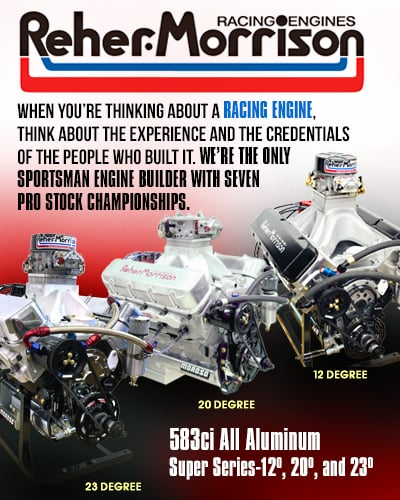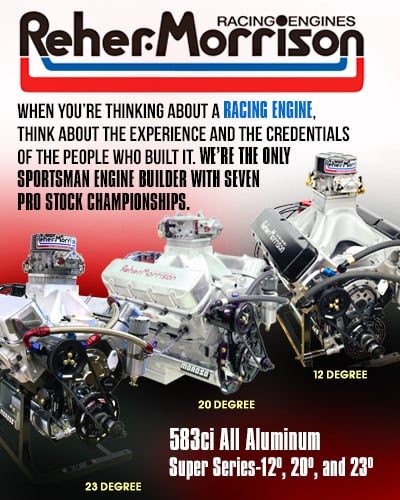HAWLEY'S PASSION FOR HELPING DRAG RACERS STILL BURNS BRIGHT
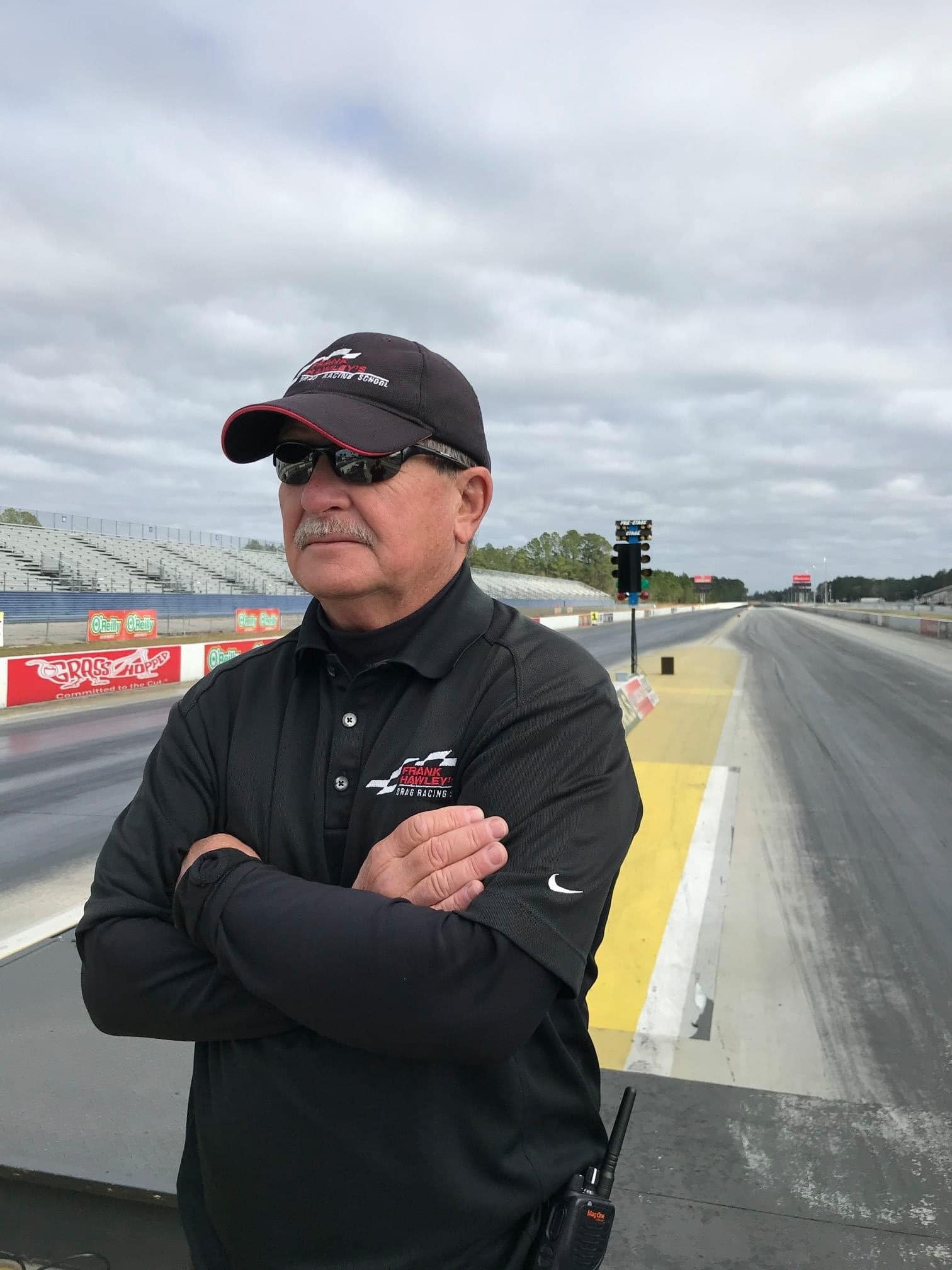 If you happen to see two-time NHRA champion and iconic drag racing instructor Frank Hawley standing in the corner of someone's pits, studying with the appearance of being deep in thought, please understand he's carrying out an essential duty.
If you happen to see two-time NHRA champion and iconic drag racing instructor Frank Hawley standing in the corner of someone's pits, studying with the appearance of being deep in thought, please understand he's carrying out an essential duty.
Hawley stares at the interviewer in the most serious tone and equally focused look. This kind of professional approach next-level of instruction has made him an overwhelming choice for novice drag racers looking to get their careers off to the right start and an increasing number of drivers who have lost their way.
"I can tell you a secret, right?" Hawley asked. "I'm trying to stay out of the way."
And just like that, Hawley breaks the ice the same way with a nervous first-timer or a wayward professional.
"One of the things you learn when you're helping people or teaching people, coaching or whatever is you can talk too much," Hawley said. "Once we get a bunch of initial stuff done, you can't wear the crew chiefs out sitting, asking them, and bothering them all the time. You certainly can't drive the driver crazy. I do what I think is appropriate and necessary so they can all get to work."
Hawley understands the importance of observing and staying out of the way. For the 37-year drag racing school operator, he's the sensei of speed and the proper way to channel it.
The most important lesson he learned long ago is that while he might be good at his craft, he's not a miracle worker; thus, the initial study period before he even gets to the track. Once on-site, he carefully connects the dots of his notations.
 When a driver struggles and Professor Hawley gets the call, the baseline to solving an issue usually starts with the crew chief.
When a driver struggles and Professor Hawley gets the call, the baseline to solving an issue usually starts with the crew chief.
"I never just talk with the driver because the crew chiefs and the drivers rely on each other to perform properly to get any results," Hawley explained. "Both of them want the other one to do well. Although they sometimes don't interact as they should, it's important that they do."
Often, Hawley is taking the notations provided by the crew chief and observing to see if he picks up on the same concerns. Hawley, who drove to his two titles with the legendary Austin Coil as his tuner, says most of the crew chiefs he interacts with present interesting conversations.
Then the focus turns to the driver.
"I have the same conversations with the drivers to see if anything that the crew chiefs and the drivers are saying overlaps or if they're on different planets," Hawley said. "That's usually before we decide to work together."
Hawley learned long ago that drag racing is a team sport, and without this aspect, an operation is doomed to fail. The same way with his counsel. If it isn't a unanimous plan, it won’t work.
"This isn't a situation where you can do it as a team or a group effort," Hawley said. "If everybody seems to be enthused and on the same page and willing to have some open conversations and discuss all this, and it sounds like I might be able to contribute somehow, then we make some kind of deal, and I'll go work with them."
It's not rocket science as to what prompts a call to Hawley.
"They're not driving well," Hawley explained. "There's a lot of stuff that people don't think about. Sometimes drivers get off the routines. That includes something as simple as backing up, staging, and everything behind the start line. It can also be when the drivers turn their air on or put the visors down or adjust their chin strap, or if they're not driving straight, if they're not following the hand signals outside the car, or if they are constantly changing how long the burnouts are and the speed of their back-ups. Most of the drivers are pretty good at keeping consistency, but the crew chiefs obviously want this to be identical every run."
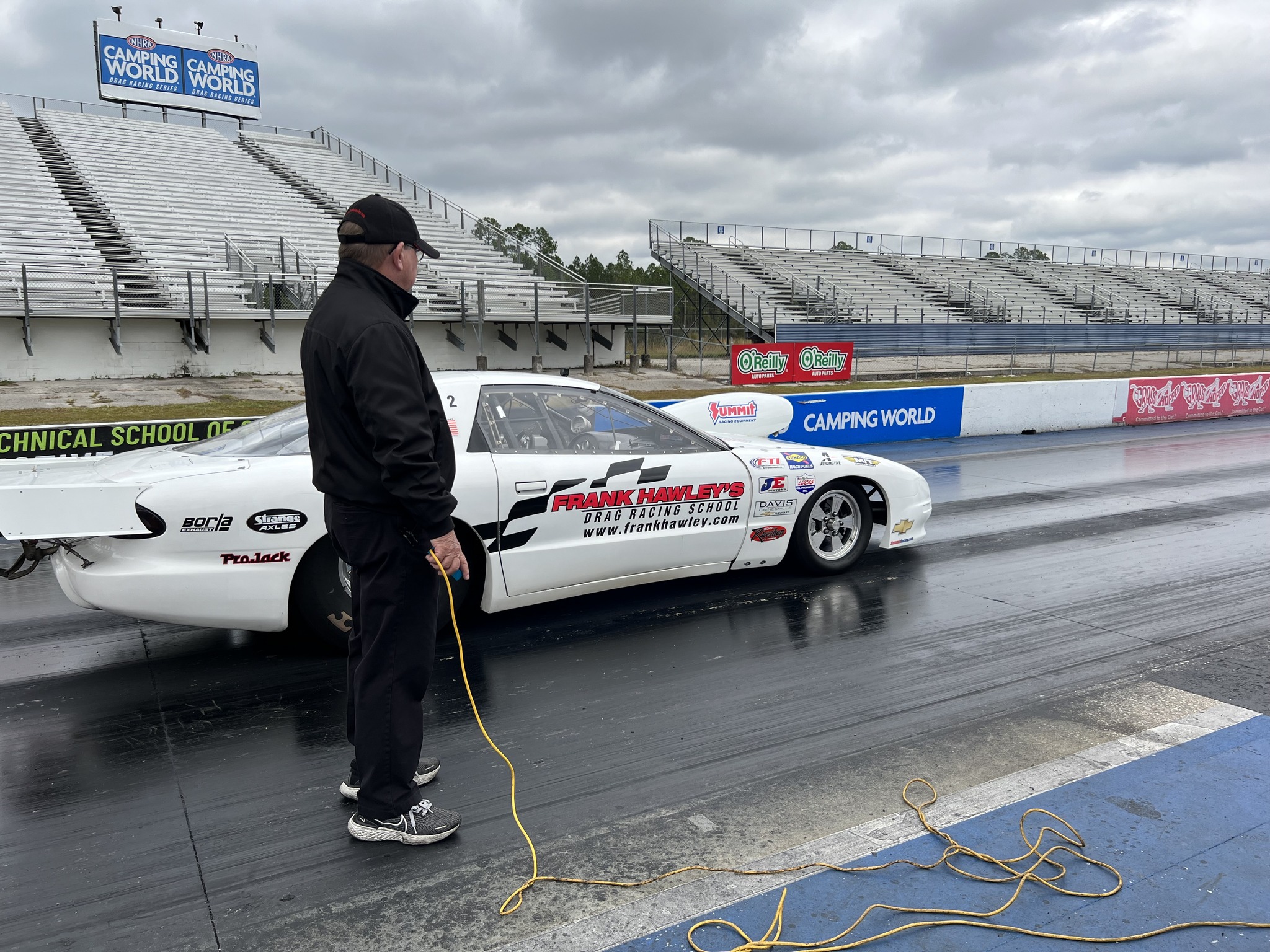 The in-car cameras don't lie. The lateral G-meters are essential, too. "The driver's job is to leave on time and stay in the middle," Hawley said. "We have enough automation that takes care of the rest of the stuff. There can be a lot of stuff going into those simple things; leave on time and stay in the middle. It's relatively simple, but people often confuse the words simple and easy. Some things in life are relatively simple yet tough to do properly."
The in-car cameras don't lie. The lateral G-meters are essential, too. "The driver's job is to leave on time and stay in the middle," Hawley said. "We have enough automation that takes care of the rest of the stuff. There can be a lot of stuff going into those simple things; leave on time and stay in the middle. It's relatively simple, but people often confuse the words simple and easy. Some things in life are relatively simple yet tough to do properly."
When the issue is driver mechanics, the fix can sometimes be going back to square one. No one is above returning to the driving baseline.
"I think almost every professional driver I've worked with, I've had come to our regular Super Gas class," Hawley admitted. "I have them listen to the three hours of lectures that we do because that's kind of my starting point with the driver."
If a driver balks at the idea, class is over.
Hawley has to often discovered the wayward driver's issue can sometimes have nothing to do with their driving procedures.
"I'm not a psychologist. Was never trained," Hawley said. "I'm not a therapist. Don't pretend to be one at all, but a lot of the stuff I end up talking with the drivers about really hasn't got anything to do with the race car or the race track. It's just other stuff in their lives they want to talk about, sometimes personal things.
"If you can't develop trust with somebody, you can't talk about personal things. I do that because a lot of what's happening in everybody's life away from the racetrack can profoundly affect how they perform at the racetrack, and they might not even realize it. I bet [with drivers] I have spent as much time talking about stuff in their lives and families and businesses and everything else. We spend as much time on all that as we do talking about the race car stuff.
"If that all gets stuck in your head, and you drag it around with you 24/7, you never know when it may affect you. There's only so much stuff you can tell somebody about how long to do the burnout. That's a big part of what we do with the drivers. Having a voice, somebody to sit and listen to about other life stuff. And sometimes you get that stuff out; it makes you do a little better at the racetrack. You never know."
Hawley might be a teacher, but he also remains a student of the game and believes he's learned something new with every trip to the dragstrip.
"If you're observant and care, the more you learn about people. Ultimately, that's what my business is; it's people," Hawley added.
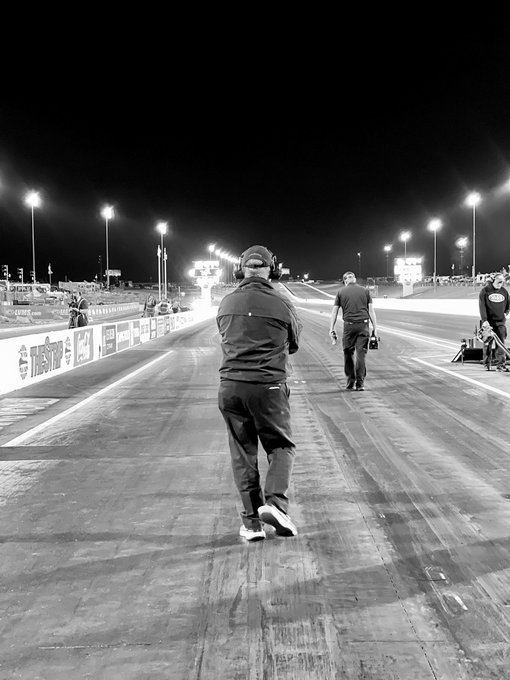 He believes it's possible to be a diehard drag racer and a people person.
He believes it's possible to be a diehard drag racer and a people person.
"I mean, if you make it nuts and bolts, which some people tend to do, everybody would be equal and perfect," Hawley said. "You'd be like, 'Well, you have to do this, and you have to do that, and you have to do this. And if you do all that, you're okay.
"A lot of times, the driver already knows all that, but they're not doing it. Then you ask, 'Why aren't you doing this perfectly all the time?’
"The answer is usually, ‘I don't know.’ And that's where we get started."
Actually, it's where Hawley begins to convey his passion for the sport.
"Drag racing was my first motorsports thing when I was a kid," Hawley said. "Then I developed this love for it by going to the races once in a while, getting magazines, having pictures on the wall, and seeing some of the touring drivers come through our local tracks. So when something gets a grip on you that early, it's easy to keep it. Then I got to race early, too, when I turned 16.
"I never really got diverted. When we started the drag racing school in 1985, had that not been a success and I couldn't maintain a career in drag racing, I may have drifted off into something else. But I was fortunate enough that what I loved when I was a kid, and I could make a living. And so things lined up, if you will.
"There were a lot of things that aligned. Then my interest in people and behavior and psychology and a bunch of other stuff fit in. And I've always enjoyed that, which fit into what I was doing in the sport. There were a lot of different things."
And for Hawley, nothing stokes the fires of that passion quite like standing in the corner of the pit area, studying, and staying out of the way.






























